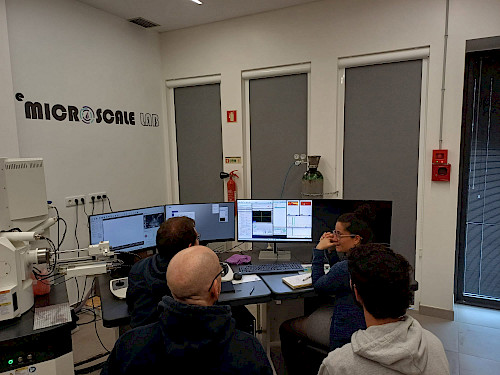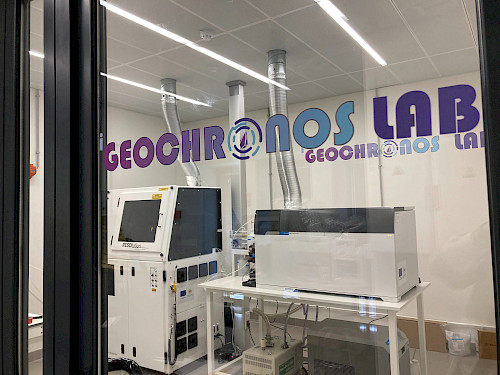About
Plate Tectonics (PT) is a well-established framework of moving plates made of oceanic and continental lithosphere. The main driving force of this system is the slab pull, a force imposed as the older and colder subducting plate sinks into the asthenosphere at convergent boundaries, producing Low Temperature/High Pressure (LT-HP) metamorphic rocks. Although our understanding about PT has improved in the last decade, there are major unknows remaining, namely when and how its onset took place, a highly controversial topic. The record of LT-HP metamorphic rocks becomes continuous only from 850-750 Ma onwards, but recent evidence of these rocks at 2100-2000 Ma suggests a similar Tectonic regime operated at this time as well. An outstanding question arises: did Plate Tectonics, as we know it today, begin to operate only 850 Ma ago or did this change take place much earlier but disappeared as the result of a preservation bias affecting LT/HP rocks? FINGER-PT will test this hypothesis using detrital minerals in sedimentary rocks that can track older LT-HP.


Key minerals that can retain pressure, temperature, and age (P-T-t) information will be used, applying chronothermobarometric tools. Through a multidisciplinary approach, we will (i) combine the existing tools with new ones to obtain reliable P-T-t conditions; (ii) test these tools and study the survival of eroded LT-HP terranes via mineral analyses in analogue modern sediments draining an exposed subduction zone; (iii) identify and sample the most appropriate units, whose detrital minerals record the last 1000 to 4000 Ma, to trace the secular evolution of cold subduction. The emerging new tools from FINGER-PT, some that push current technological boundaries, will be widely applied by other petrologists. Establishing when modern-day PT began will influence the geodynamic mechanisms proposed for the early Earth (e.g. sluggish tectonics), forcing a shift of current conceptual models on the evolution of Earth systems.
Research Work packages
WP1 - Using trace element systematics in titanite to discriminate growth under variable P-T.
While there is a wealth of titanite data from HT igneous and metamorphic rocks, there is limited chemistry data available for LT-HP titanite. Moreover, titanite data from other common lithologies, namely metacalcsilicate rocks, metapelite and marls, common lithologies in exhumed ancient subduction channels, need to be combined before a more robust discrimination can be widely applied to detrital grains. The aim of this task is to characterise titanite from LT-HP calcsilicate and metapelite rocks using LA-ICP-MS.
Personnel: Inês Pereira and MSc student Patrícia Amaro


WP2 – Mineral inclusion thermobarometry.
2a Using rutile and quartz inclusions trapped in garnet to estimate metamorphic temperatures.
2b Elastic barometry applied to quartz inclusions in rutile.
Personnel: Inês Pereira and collaborators
WP3 – Pushing the limits of rutile: diffusion and dissolution experimental approach.
Recent work from Marschall et al. (2013) and Dohmen et al. (2019) on Nb, Ta, Hf and Zr diffusions have placed strong controls on the behaviour of these elements, but we lack understanding on equally relevant elements such as Sc, Cr and V. An experimental approach is required to quantify the exact threshold of these very relevant element closure temperatures. The fluid-rutile partitioning experiments are conducted at a high pressure and high temperature conditions, designed to determine dependency of partition coefficient to temperature, fO2, and fluid compositions.
Personnel: Inês Pereira, Kenneth Koga and PhD Student (to be recruited)
WP4 - Tracking subduction-related metamorphism using detrital minerals in modern sediments.
Despite detrital minerals having lost their petrographic context, they can still yield unique information about their petrogenesis, including metamorphic conditions. Yet, some of the biases affecting these records are still mostly untested. This WP will focus on a detailed assessment of the existence of bias in the detrital garnet, rutile and titanite records in fluvial sediments within respect to the exposed source areas.
Personnel: Inês Pereira, Pedro Dinis and Nuno Grácio (PhD student)
WP5 - Subduction-related metamorphism in the Precambrian: how far back can we find it?
Examine the sedimentary geological record looking for subduction-related metamorphism in the Archean and early Paleoproterozoic
Personnel: Inês Pereira, postdoc researcher (to be recruited)

